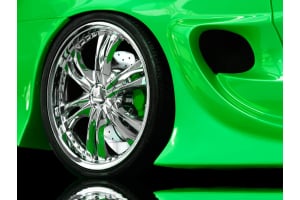
All images by author unless otherwise noted.
A number of angles are measured and corrected when necessary when a wheel alignment is performed. Keeping these angles within specifications keeps the tires wearing evenly, improves fuel economy, and decreases excessive on suspension components and tires. Normal wear and tear will slowly allow these angles to change enough so that uneven tire wear will become apparent in as few as 500 miles. Potholes and hitting objects such as curbs can change these angles more acutely and cause increased tire wear and cause the vehicle to wander.
What Angles Are Measured When an Alignment Is Performed?
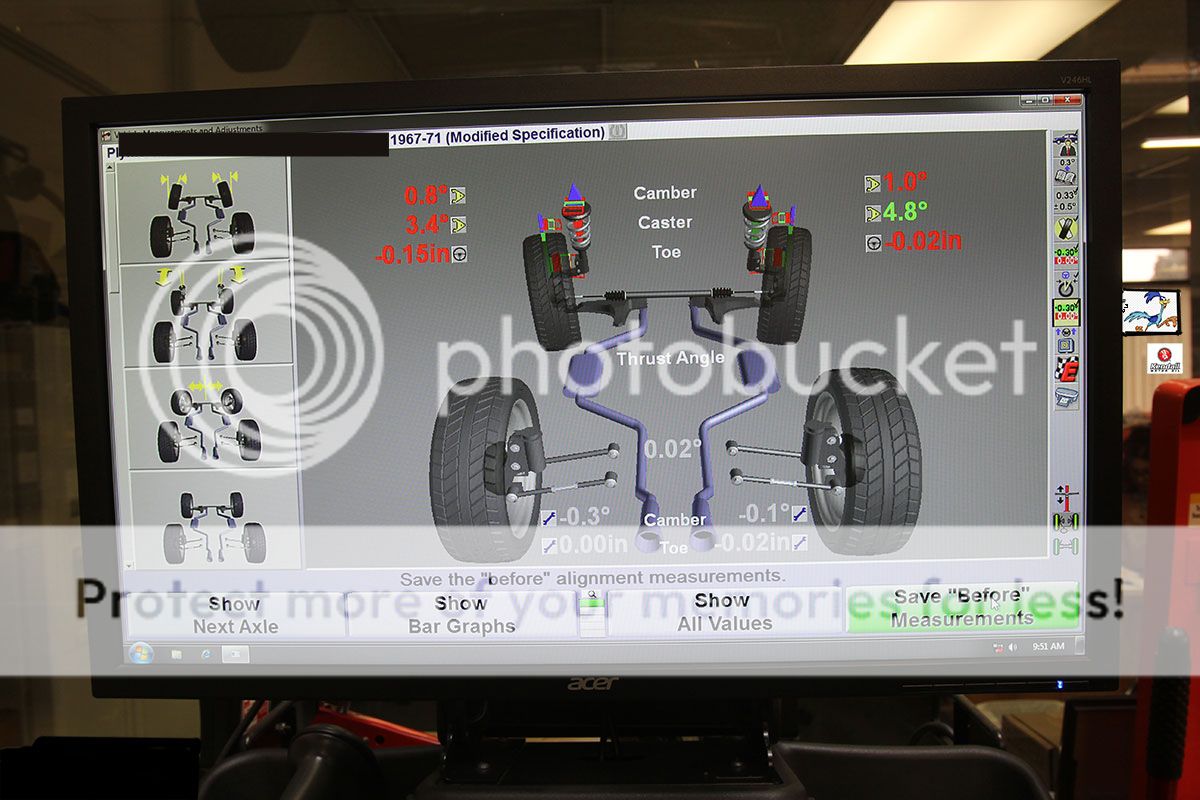
For years wheel alignments were commonly called front-end alignments because the front-end is wear all the action took place; rear-end angle measurements might have been taken but only front-end angles could be adjusted. Vehicle design and technology changed and rear angles not only became more incorporate but also became adjustable with the advent of shims. There are three main angles that are measured and adjusted during a wheel alignment-Camber, caster, and toe. When performing what’s called a four-wheel alignment, rear camber and toe as well as an angle called thrust angle are measured and can often be adjusted with shims.

Camber determines how much of the tire makes contact with the road because it describes the angle at which the tire sits as compared to the vertical and is measured in degrees positive or negative. Positive camber angle means the outside of the tire is leaning away from the car and negative camber means the top of the tire is leaning in towards the car. Most vehicle alignment specifications have camber being set between one degree positive and negative although some performance specifications will go as high as three degrees negative. Excessive negative camber will cause excessive wear along the inside of the tread. Positive camber causes outer edge tread wear.
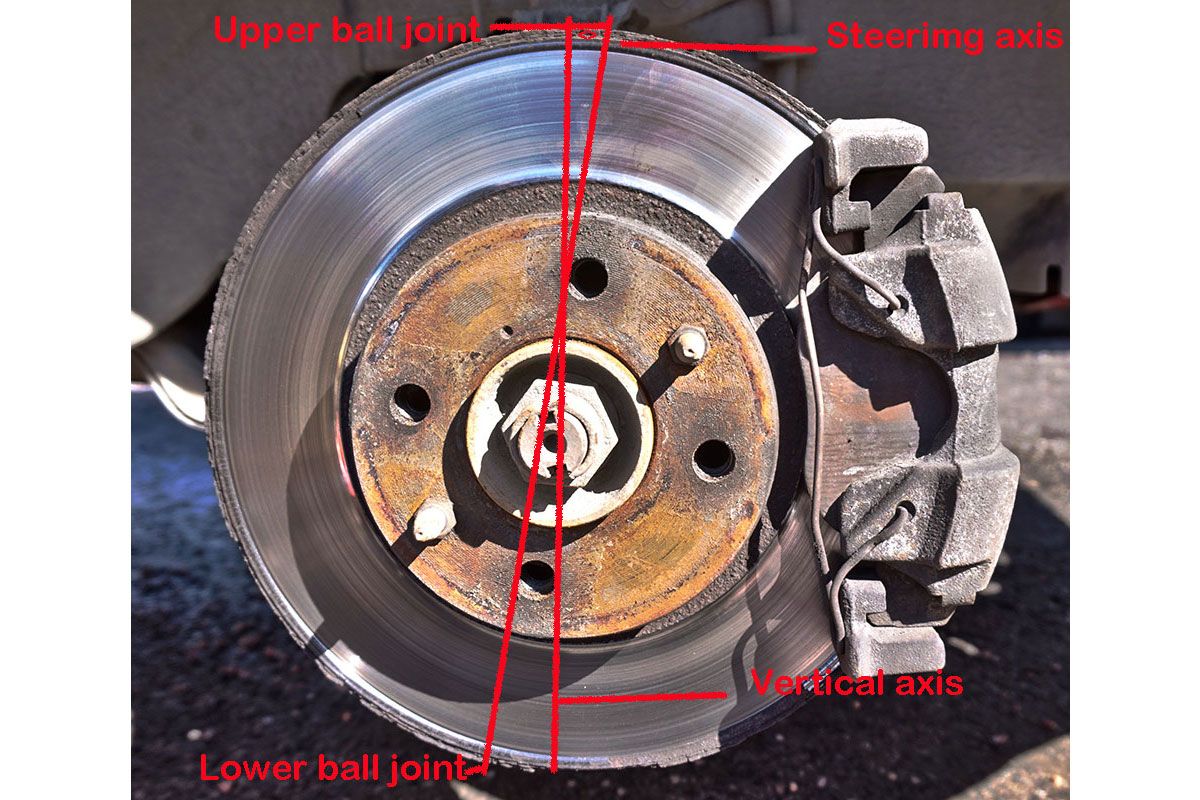
Caster used to refer to the angle between the vertical and a line drawn through the upper and lower ball joints. The advent of MacPherson struts has changed the reference to the steering axis which is the angle around which the front wheel will lean when the front wheels are turned. Caster can be either positive or negative but negative was mostly used to assist steering return in manual steering systems. Incorrect caster will cause irregular suspension wear, especially in bushings that are pushed in directions they weren’t designed to move, and increased steering effort.
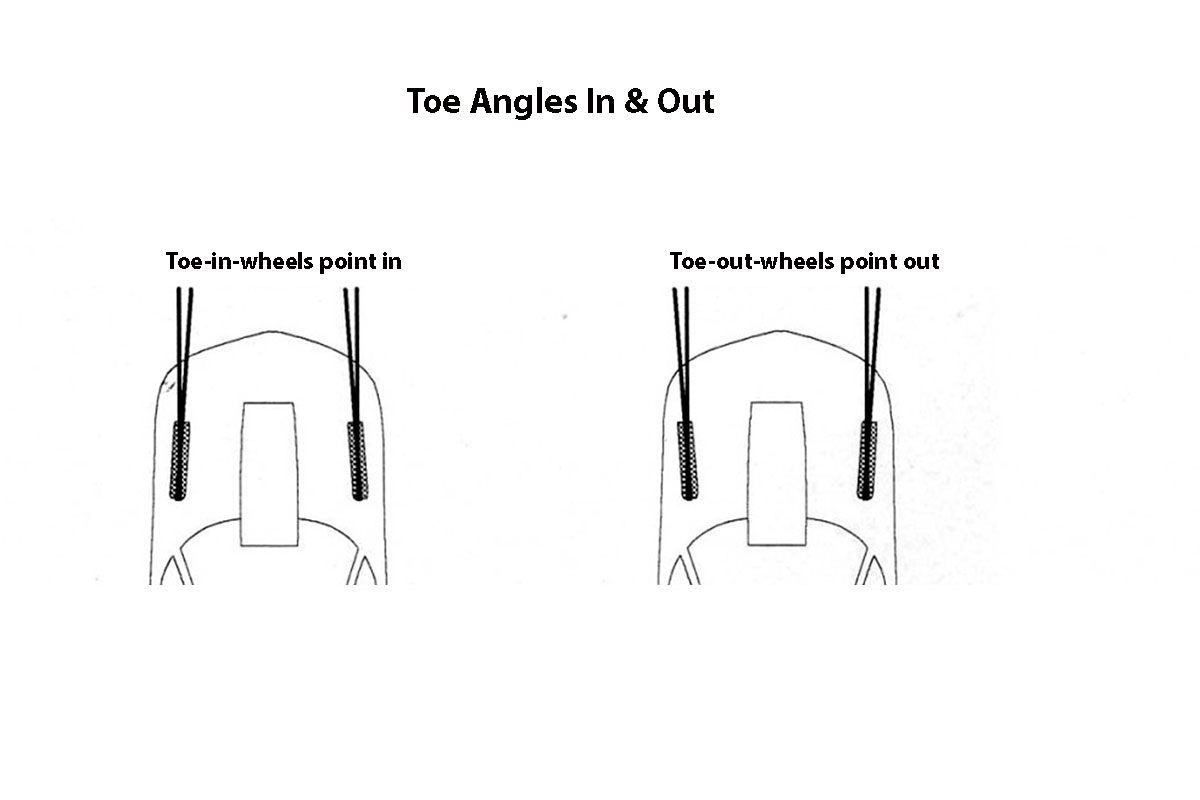
Toe is actually measured as three angles-the angle that the left and right tires sit in relation to a line drawn down the center of the car from front to rear (Individual toe-L&R), and their combined angles (total toe) off the centerline. Individual and total toe can both be either toe-in or toe-out. Toe-in means the front of the wheel is closer to the centerline and toe-out means the wheel is pointed outward. If toe on both wheels is off enough in opposite directions, total toe can actually be correct according to the specifications. Excessive toe-in usually causes a “feathered” wear on the outside edge of the tread while toe-out feathers the inside of the tire. This feathered wear can also cross the tread at an angle. Front-wheel-drive vehicle alignment specifications will usually have both front wheels toed slightly out because engine torque will pull them inward under acceleration. Conversely, rear-wheel-drive vehicles will be toe-in because acceleration tends to push them apart.

Thrust-angle is the angle of a line drawn between the rear wheels off the vehicle’s front-to-rear centerline. It’s the angle that the rear wheels want to push the car in relation to where the nose of the car is pointing. Control arm rear suspensions often have provisions to have their thrust-angles, as well as toe and camber, adjusted.
Suspension Component Wear Is the Number One Cause of Alignment Issues
Although not the only cause of alignment issues, normal wear will slowly change alignment angles as bushings wear-in and then wear-out and ride heights change due to suspension springs weakening or incorrect vehicle loading. Regularly driving over irregular and rough roads, especially at higher speeds can also contribute to alignment issues. Sagging springs will cause the ride height to decrease which will pull the tires in and increase negative camber.
Diagnosing Alignment Problems with Tire Wear

Tire wear will give a tire expert a good idea of what’s wrong with a car’s alignment. As mentioned above camber issues show up as smooth uneven wear on the one edge of a tire. Negative camber causes the inside of the tread to wear faster while positive camber causes the outer edge of the tread to wear.
Incorrect caster settings will usually show up as excess wear on both edges with one edge experiencing more wear than the other. Be careful, this can appear to be tire pressure that’s too low but that usually causes both edges to wear evenly.
Feathered wear that often extends across the tread diagonally indicates an incorrect toe setting. Excess toe out will cause the inside edge to wear more while toe-in causes more outside edge wear. This feathered wear can also extend around the inside or outside diameter of the tire.
Diagnosing Alignment Problems by Driving Symptoms
What happens when the vehicle’s being driven will also often indicate alignment problems. For instance:
- Drifting one way or another with the wheel straight can indicate a camber issue or that both tires are toed incorrectly in the direction of drift.
- Sharp pulling, especially when the suspension bounces indicates a problem with caster on one side.
- Sharp pulling, especially under acceleration can indicate toe issues.
- The car seeming to swerve back and forth and require small steering inputs to maintain a straight course indicates worn suspension components such as control arm bushings, ball joints, and/or tie rod ends are allowing a wheel or both wheels to “flop about” while driving.
- It’s harder to steer in one direction or the other indicates a caster issue.
- The steering wheel seems to want to return faster than I can control it also indicates a caster issue.
This is in no way a complete list of alignment problem symptoms and causes.
Dan the Tire Man would be happy to help you with your alignment questions and problems.
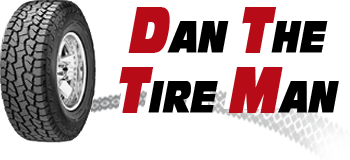
 100% Free Road Hazard Warranty
100% Free Road Hazard Warranty 





